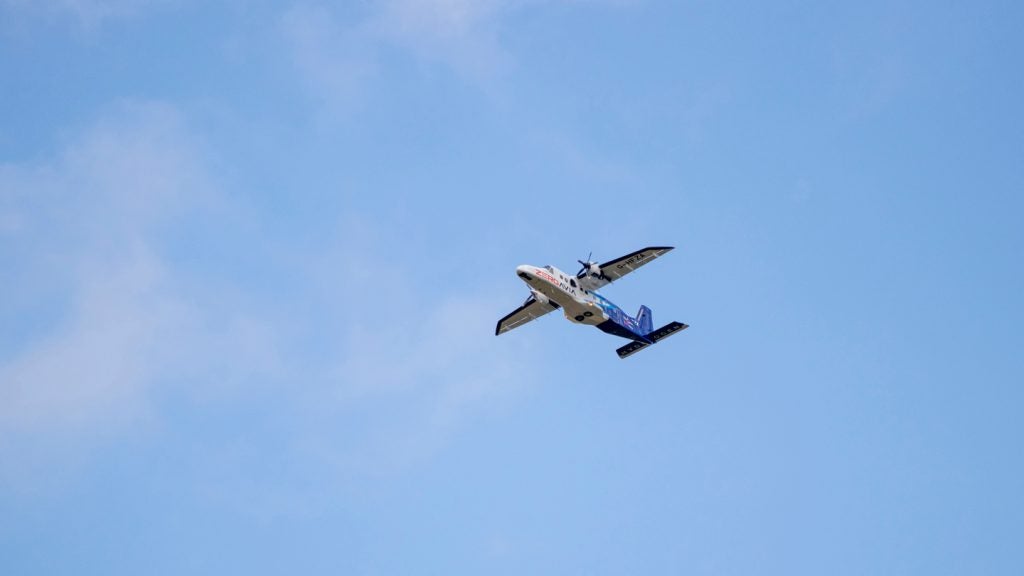
Trinidad and Tobago’s infrastructure is among the best in the Caribbean, with much of it created during the oil boom of the 1970s. But the demands of a modern, thriving economy mean that more investment is always needed.
As the economy prepares for diversification into IT, tourism and finance, the government has pledged to spend up to $2bn to transform the nation’s airports, seaports and highways.
"No country in Latin America is as stable as Trinidad and Tobago," says Minister of Works and Transport Franklin Khan. "So there are a lot of companies who could put their Latin American headquarters in Trinidad and be just as effective."
"If we develop a proper air / sea link, Trinidad and Tobago can become the gateway to the whole continent. The country’s unique position and up-to-date infrastructure will allow it to become a trans-shipment hub between North and South America."
AIRPORT PROJECTS
Important changes have been made, and will continue to be made, at Trinidad and Tobago’s airports, both run by the Airports Authority of Trinidad and Tobago (AATT).
How well do you really know your competitors?
Access the most comprehensive Company Profiles on the market, powered by GlobalData. Save hours of research. Gain competitive edge.

Thank you!
Your download email will arrive shortly
Not ready to buy yet? Download a free sample
We are confident about the unique quality of our Company Profiles. However, we want you to make the most beneficial decision for your business, so we offer a free sample that you can download by submitting the below form
By GlobalDataCrown Point Airport in Tobago is focused on tourism. It recently became an international airport with direct flights from the UK and the USA. A $12m upgrade will make it more pleasant for tourists by expanding terminal capacity.
One of the country’s most expensive infrastructure investments has just been completed at Piarco International Airport, 35 minutes from Port of Spain. A modern terminal building opened in May 2001, and high-speed taxiways were also built to get aircraft off the runways more quickly. The total cost of the project was $400m.
"The new design allows a passenger to get from the plane to the curbside quicker, with much less hassle and discomfort," says Linus Rogers, chairman of the AATT. "We increased the number of aircraft that we can bring in within a particular hour, enabling us to defer building a new runway, maybe for the next ten
to 15 years."
Fresh challenges lie ahead. "There is a tendency for Caribbean airports to have peak periods for international flights early in the morning or late in the afternoon," says Rogers. "We need to attract new airlines to spread the flights throughout the day."
The airport modernisation has opened up new trade opportunities, which the airport chief is keen to exploit. "We want to create a cargo hub that includes a large cold storage and dry goods storage area," he says. "Trinidad can become a trans-shipment centre for fresh fish exported from South America to the USA and Canada."
"By 2020 we will have a second runway, to be used for carrying cargo to a large, fully equipped cargo facility offering cheap fuel. We hope to attract major cargo companies such as DHL, UPS and FedEx to use our hub as their base in the South American and Caribbean region."
The investment programme has also enabled refits at both of Trinidad’s main ports. Point Lisas, a private industrial port focused on the export of methanol and urea, is implementing a $25m expansion programme to enable larger cargo vessels to use its facilities. Port of Spain Harbour has also been recently modernised as a trans-shipment point for Latin America and as a cruise-ship destination.
MODERN ECONOMY
Money is also being spent to improve internal transport links. Soon the four-and-a-half-hour journey from one end of Trinidad to the other will be cut by as much as half.
"It is not like building a highway through the Amazon jungle," says Khan. "It is about traffic management on a modern road network. Due to the high standard of living, we have an inordinate amount of cars."
Modernising the infrastructure of Trinidad and Tobago, in line with the government’s 2020 vision, and in particular improving transportation, is Khan’s mandate. "At the end of the day it’s all about modernising the economy, the infrastructure but also the system to make things work," he says.
As part of the new government’s strategy, the minister is creating commissioning authorities for transportation projects with the ability to borrow on the international markets.
The national transportation strategy is aimed at building on Trinidad and Tobago’s natural advantage as a gateway to the Americas. The AATT opened the new Piarco International Airport, the most modern in the region, in 2001. It has 14 aircraft gates for international flights and two for domestic.
Although its financing by the previous government is under scrutiny, Trinidad’s Piarco International Airport is a major ATC centre, covering some 750,000 square miles around the islands. 14 airlines operate scheduled services to the Caribbean, North America, South America and Europe, including the national carrier BWIA.
A new drive is under way to attract more business from overseas airlines. "We are showing them that we can offer a superior service," says Rogers. "We are in a unique position, especially for airlines going south, which can use us as a hub."
Piarco’s planners ensured the airport is scalable for further growth, with a second runway planned in 10–15 years time.
Piarco International Airport will become the heart of a unique
enterprise zone, incorporating the cargo transhipment centre, an international aircraft maintenance facility and a large free trade area, as well as technology, research and manufacturing centres. "It will transform Piarco into an export-driven business city of the new century," adds Rogers.
ARUBA DEVELOPMENT
The project of expanding Aeropuerto Internacional Reina Beatrix was given the name Beatrix 2000. In a project lasting three years, Aeropuerto Internacional Reina Beatrix has been turned into a modern and passenger-friendly airport.
The expansion entailed the construction of two completely new terminal buildings for departure and hold room areas, and the renovation of the existing terminal building for arrivals.
The expansion consists of two new buildings. The first building is the international building and contains 24 ticket counters, airline offices, an outbound baggage area and a makeup area behind the airline offices.
The second building is meant for US-bound passengers. This building includes 42 ticket counters, airline offices, and US FDA, immigration and customs facilities.







